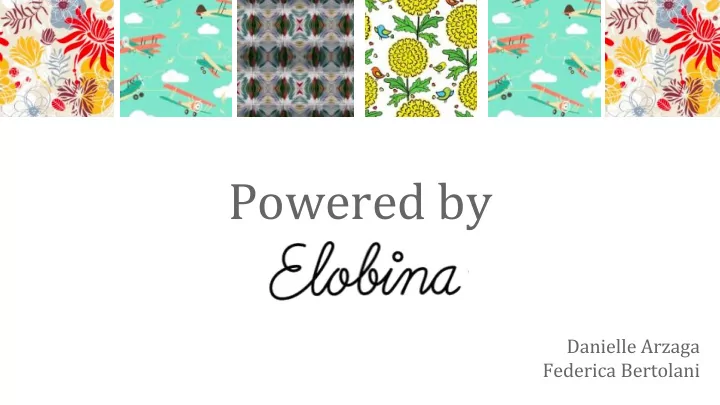

Powered by Danielle Arzaga Federica Bertolani
The issues with textile industry
FROM - Resource use & pollution Figure 1. Heaviest impacts of textile/apparel industry. Retrieved from NRDC – Clean by Design, 2010
FROM - Resource use & pollution 3500 used 150L per kg of fabric dyed 10% of which 2nd largest Chemicals Water are hazardous polluter 11 to be 32 million immediately eliminated Olympic sized swimming pools
FROM - Resource use & pollution 3500 used 2nd largest polluter 10% of which 150L per kg Chemicals Water are hazardous of fabric dyed 11 to be 32 million immediately eliminated Olympic sized swimming pools
TO - Efficiency & Eco-friendly processes Eco-textile products are considered to have some or all of the following characteristics (Challa, 2017): ● Made using organic materials ● No use of harmful chemicals, bleaches, or dyes ● Can be made from recycled or reused textiles or materials (e.g., plastic bottles) ● Quality and made to last ● Fair trade certified, or produced where workers are paid a fair wage and have decent working Technolog Material Circular y innovation economy
FROM - Overconsumption Total fiber consumption 60% more 99 million 101 million Avg. person tonnes tonnes for ½ time (2016) (2017) In the fashion industry 50% of people report owning more than they need + 57 million Grow 63% to 102 million tonnes of tonnes waste
TO - Limit textile waste Current model Design for co-creation or customization “ Products that can be customizable offer the chance to create a deeper bonding between the user and the product.” (Chapman, 2005). Extension of the product lifespan It requires a new mindset
FROM - Overproduction Pulse of the Fashion Industry (2017) identifies overstock as one of the most pressing issues in the industry Lack of Poor demand Early, communication planning and high-volume and exclusion of production orders suppliers scheduling
TO - Made to order On-demand manufacture “Design for need” Artificial intelligence Production-to-demand 3D printing
FROM - Lack of access for small designers
TO - Democratization of design process “Democratization of technology” : the process by which access to technology rapidly continues to become more accessible to more people → Material selection can have a big impact: brands can control it, so it is important that they can source whatever they want; → Important: those businesses that are able to create a link between the demand and the offer, are extremely important in this industry-transformation.
FROM - Global supply chains Supply chain
FROM - Global supply chains EU Flagship initiative on the garment sector
TO - Localized production Local production is a way of minimizing carbon-footprint; Shorter lead time It allows more control over the supply chain, because it is possible to visit the factories; If produced in Europe, because of the regulation, the factory probably has a better eco-profile Market strategy: consumers trust more “Made in Italy” compared to “Made in China” More jobs and wealthy in the community
Brands and designers point of view
THANK YOU. Questions?
Recommend
More recommend